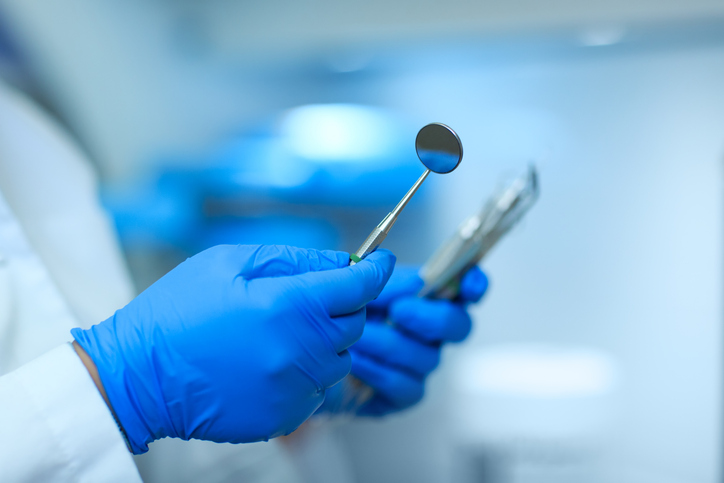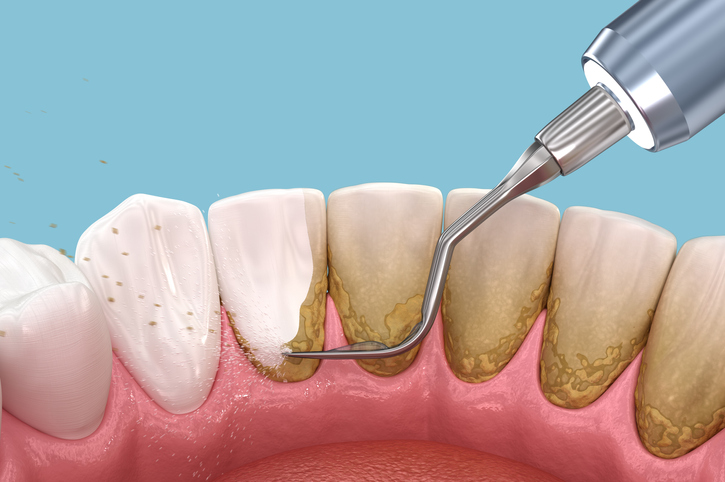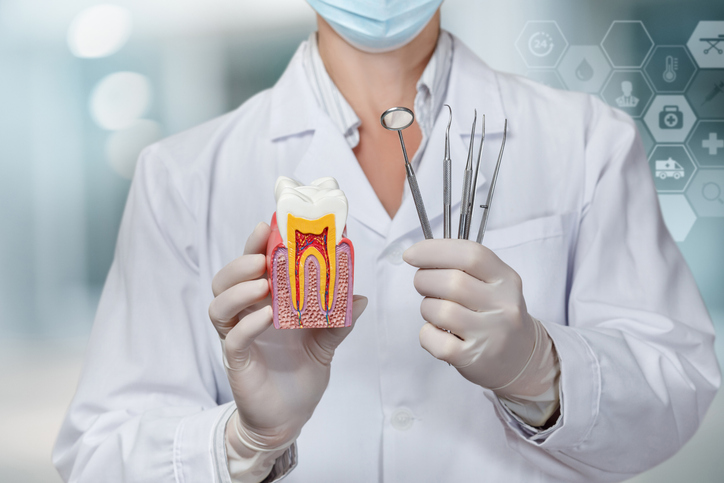Hearing that you need periodontal surgery can feel overwhelming. Many patients worry about pain, recovery, or what the procedure actually involves. At Pinnacle Center Dental Implants and Periodontics in Pittsburgh, PA, our experienced periodontists, Dr. Katherine L. Roll and Dr. Kelly B. Williams, believe that knowledge is the best way to ease anxiety. By understanding why periodontal surgery is recommended, what happens during the procedure, and how recovery works, you can approach treatment with confidence and peace of mind.
What Is Periodontal Surgery?
Periodontal surgery is a specialized branch of dentistry focused on treating gum disease and repairing the supporting structures of your teeth. Gum disease, or periodontitis, occurs when bacteria cause chronic inflammation in the gums, leading to bone and tissue loss. While mild gum disease (gingivitis) can often be treated with non-surgical therapies like scaling and root planing, advanced cases sometimes require surgical intervention.
Some common types of periodontal surgery include:
- Pocket Reduction Surgery: Gum pockets that form around the teeth can trap bacteria and become impossible to clean with brushing and flossing alone. Surgery reduces the depth of these pockets, making oral hygiene more effective.
- Regenerative Procedures: When gum disease damages bone and soft tissue, regenerative treatments may be used to encourage natural regrowth. These procedures often involve grafts or membranes that help your body rebuild what was lost.
- Crown Lengthening: This surgery reshapes gum and bone tissue to expose more of the tooth’s surface. It can be performed for cosmetic reasons, such as improving a “gummy smile,” or for restorative reasons, like preparing a tooth for a crown.
- Gum Grafting: Receding gums can expose sensitive roots, increasing the risk of decay and tooth loss. Gum grafts use tissue from another area of your mouth (or donor tissue) to cover exposed roots and restore a natural gumline.
Each of these treatments is designed not only to restore your oral health but also to protect your teeth and enhance your smile’s appearance.
Why You Might Need Periodontal Surgery
Your dentist or periodontist may recommend surgery if:
- You have deep gum pockets that cannot be managed with non-surgical cleaning.
- Bone loss around your teeth is visible on X-rays.
- Gum recession is causing sensitivity or putting teeth at risk.
- You require improved gum and bone health before getting dental implants.
- You want to improve the appearance of your smile due to uneven gumlines.
Left untreated, gum disease can lead to loose teeth and eventual tooth loss. It can also impact your overall health, as research has shown connections between periodontal disease and conditions such as heart disease, diabetes, and respiratory illness.
Preparing for Surgery
Preparation is a key part of the process, and our team ensures every patient feels fully informed before moving forward. At your consultation, Dr. Roll or Dr. Williams will:
- Review your medical history and current medications
- Take digital imaging or X-rays to evaluate bone health
- Explain your treatment options in detail
- Provide personalized pre-surgery instructions
You may be advised to:
- Arrange for someone to drive you home if sedation is used
- Avoid food, drink, or certain medications the night before surgery
- Take prescribed antibiotics to prevent infection
- Plan for one to three days of rest depending on the procedure
We encourage patients to bring a list of questions to their consultation. When you understand exactly what will happen and why, the experience feels far less intimidating.
What Happens During Periodontal Surgery
The procedure itself will depend on your unique needs. However, most surgeries follow a similar structure.
1. Anesthesia or Sedation
Local anesthesia is typically used to numb the treatment area, ensuring comfort throughout the procedure. Patients with dental anxiety may choose sedation options for a more relaxed experience.
2. Treatment Phase
Once you are comfortable, your periodontist carefully lifts the gum tissue to access the roots and bone. Depending on the surgery type, diseased tissue is removed, bone grafts may be placed, or gum tissue is repositioned to reduce pocket depth.
3. Suturing
After treatment, the gums are sutured back into place. The stitches may dissolve on their own or require removal at a follow-up appointment.
4. Dressing and Care Instructions
A protective dressing may be applied to the surgical site. Before leaving the office, you’ll receive detailed post-operative care guidelines tailored to your specific procedure.
The length of surgery varies. A straightforward pocket reduction may take less than an hour, while more complex regenerative procedures may last several hours.
What to Expect During Recovery
Every patient heals differently, but knowing what’s normal can help you feel more at ease.
- Discomfort: Mild soreness or sensitivity is common but usually managed with over-the-counter or prescribed pain relievers.
- Swelling: Some swelling or bruising may occur for two to three days. Applying a cold compress can help reduce this.
- Bleeding: Minor bleeding is normal in the first 24 hours. If bleeding persists or is heavy, contact your periodontist.
- Diet Adjustments: Stick to soft foods such as yogurt, mashed potatoes, and soups for the first few days. Avoid spicy, crunchy, or hot foods that may irritate healing gums.
- Oral Hygiene: You will be instructed on how to keep your mouth clean without disrupting the surgical area. This may include gentle rinsing with a prescribed antimicrobial solution.
Most patients feel well enough to return to work and normal activities within a week, although complete healing may take several weeks depending on the procedure performed.
Tips for a Smooth Recovery
To maximize healing and avoid complications, follow these best practices:
- Take all prescribed medications exactly as directed.
- Avoid smoking and alcohol, as both delay healing and increase infection risk.
- Sleep with your head slightly elevated to minimize swelling.
- Keep all follow-up appointments so your periodontist can monitor progress.
- Be patient with yourself. Full tissue and bone regeneration takes time, but results are long-lasting.
Long-Term Benefits of Periodontal Surgery
Choosing periodontal surgery is an investment in your oral and overall health. The benefits include:
- Reduced Risk of Tooth Loss: Stronger gum and bone support means your natural teeth last longer.
- Improved Oral Function: Chewing, speaking, and smiling become easier and more comfortable.
- Enhanced Appearance: Healthy gums create a balanced, attractive smile.
- Better Overall Health: Controlling gum disease may help reduce risks linked to systemic conditions such as heart disease and diabetes.
- Foundation for Future Restorations: For patients considering dental implants, periodontal health is essential for long-term success.
Why Choose Pinnacle Center Dental Implants and Periodontics
At Pinnacle Center, you are in the hands of highly skilled specialists who focus exclusively on periodontal care and dental implants. Dr. Katherine L. Roll and Dr. Kelly B. Williams bring years of experience, advanced training, and a compassionate approach to every patient.
Our office in Pittsburgh, PA, is equipped with modern technology to ensure precise diagnosis and effective treatment. We prioritize patient comfort, offering sedation options and personalized care plans designed to meet your unique needs. Whether you require gum grafting, bone regeneration, or implant placement, you’ll find expert care in a welcoming environment.
Take the Next Step Toward Healthier Gums
If you’ve been recommended for periodontal surgery, it’s important not to delay treatment. Early action can prevent further damage, protect your natural teeth, and restore your confidence in your smile.
Contact Pinnacle Center Dental Implants and Periodontics in Pittsburgh, PA to schedule your consultation with Dr. Roll or Dr. Williams. Together, we’ll create a treatment plan that gives you the healthiest foundation for a lifetime of smiles.





 When it comes to maintaining a healthy smile, many people focus on their teeth—but healthy gums are just as important. Your gums provide the foundation for your teeth, supporting their stability and protecting them from bacteria and infection. Neglecting gum health can lead to serious oral health issues, including gum disease, tooth loss, and even complications that affect overall health.
When it comes to maintaining a healthy smile, many people focus on their teeth—but healthy gums are just as important. Your gums provide the foundation for your teeth, supporting their stability and protecting them from bacteria and infection. Neglecting gum health can lead to serious oral health issues, including gum disease, tooth loss, and even complications that affect overall health.
 Maintaining the health of your teeth and gums is essential to preserving a beautiful smile and a strong, healthy mouth. One of the advanced treatments available to patients today is
Maintaining the health of your teeth and gums is essential to preserving a beautiful smile and a strong, healthy mouth. One of the advanced treatments available to patients today is  Gum disease, also known as periodontal disease, is a prevalent condition affecting millions of individuals worldwide. It is an inflammation of the gum tissue caused by the accumulation of plaque, a sticky film of bacteria that forms on teeth. If left untreated, gum disease can lead to tooth loss and has been linked to other health issues, including heart disease and diabetes.
Gum disease, also known as periodontal disease, is a prevalent condition affecting millions of individuals worldwide. It is an inflammation of the gum tissue caused by the accumulation of plaque, a sticky film of bacteria that forms on teeth. If left untreated, gum disease can lead to tooth loss and has been linked to other health issues, including heart disease and diabetes. Periodontal health refers to the well-being of the gums, ligaments, and bone structures that surround and support our teeth. These structures are vital for maintaining our teeth’s stability and strength in our jaws. A solid periodontal foundation isn’t just about aesthetics; it’s fundamentally intertwined with our overall oral health.
Periodontal health refers to the well-being of the gums, ligaments, and bone structures that surround and support our teeth. These structures are vital for maintaining our teeth’s stability and strength in our jaws. A solid periodontal foundation isn’t just about aesthetics; it’s fundamentally intertwined with our overall oral health. Periodontal disease
Periodontal disease